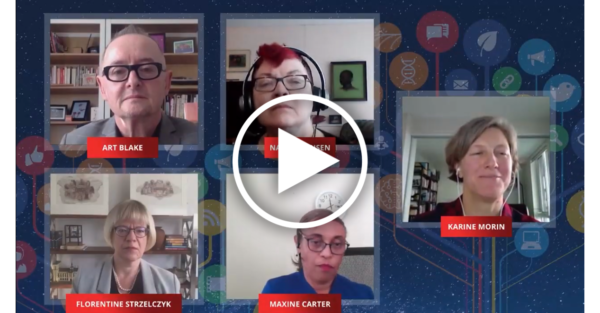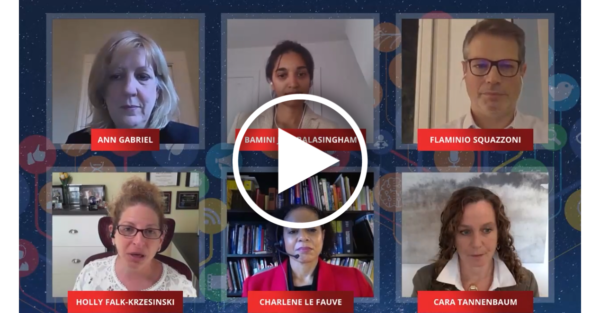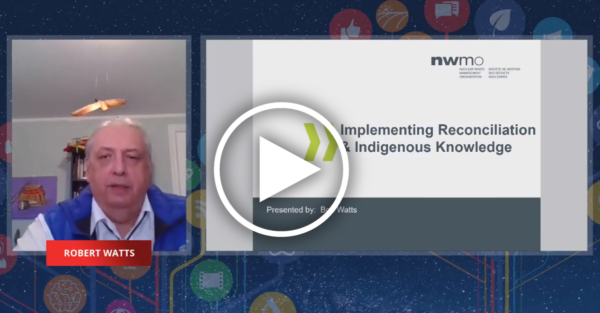The following are the CSPC 2020 panels that cover
Equity, Diversity, Inclusion
Pre-Conference Day 10 – November 13th 2020
Organized by: Canadian Science Policy Centre, Canadian Commission for UNESCO, Immigrant and International Women In Science Network, and Mount Saint Vincent University
Symposia Sessions:
Proactively Planning for Gender Equity in the Emerging Blue Economy
Angeline Gillis – Associate Executive Director, The Confederacy of Mainland Mi’kmaq (CMM)
Kendra MacDonald – CEO, Canada’s Ocean Supercluster
Gerald Singh – Assistant Professor, Dept. of Geography, Memorial University
Rima Hamoui – Director General of Strategic Policy and Priorities, Fisheries and Oceans Canada
Anya Waite – Associate Vice-President Research (Ocean), Dalhousie University
Through an IWS’ lens: Engaging into New Solutions to Old Workplace Problems of Equity, Diversity and Inclusion
Alejandro Adem – President, Natural Sciences and Engineering Research Council of Canada (NSERC)
Akiko Iwasaki – Waldemar Von Zedtwitz Professor of Immunobiology and Molecular Biology, Howard Hughes Medical Institute
Catalina Lopez-Correa – Executive Director, Canadian COVID Genomics Network (CanCOGen), Genome Canada
Maria Loza-Correa – A/ Advisor Awards Program and Design Branch, Canadian Institute of Health Research
Michael Tremblay – President & CEO, Invest Ottawa & Bayview Yards
Yanet Valdez Tejeira – Independent Consultant, UBC Faculty of Medicine
Strengthening EDI policies to diversify the STEM sector
Shari Graydon – Award-Winning Author
Kevin Hewitt – Professor, Dept. of Physics and Atmospheric Science, Dalhousie University
Denise Pothier – Vice President Practice Services and Indigenous Relations, Stantec
Lesley Shannon – Professor and Chair, School of Engineering Science, Simon Fraser University
Serge Villemure – Director, Scholarships, Fellowships and Chairs for Women in Science and Engineering, Natural Sciences and Engineering Research Council (NSERC)
Annemieke Farenhorst – Associate Dean of Research, University of Manitoba
Tamara Franz Odendaal – Professor, Mount Saint Vincent University
Laleh Behjat – Professor, Dept. of Electrical and Computer Engineering, University of Calgary
Context: As Canada emerges as a strong economy dedicated to excellence in science, technology and innovation, it faces challenges at the forefront of equity, diversity and inclusion (EDI) of women, immigrants and minorities in science, technology, engineering and mathematics (STEM) fields. The COVID-19 pandemic has shifted our work culture in academic, public, and private sectors and further amplified many of the systemic problems that exist in our organizations, especially for women, single parents and immigrants. This symposium discussed the EDI challenges based on the “blue economy”, immigrant women and other equity-deserving groups in STEM, within the context of the current pandemic situation.
Takeaways:
- We need to acknowledge technological and unconscious biases towards the ‘equity-deserving groups’ (women, immigrants, visible minorities, LGBTQ and BIPOC) and be proactive to ensure their representation in STEM at all levels.
- The Gender Based Analyses + (GBA+) strategy adopted by government agencies seeks to address equity, diversity and inclusion (EDI) based not just on gender but all the equity-deserving groups, including single parents and primary caregivers.
- While quantitative measurements of GBA+ are underway, qualitative analysis can provide the lay of the land to proactively develop strategies.
- Gender participation in the economy is uneven. Science is a ‘white man’s club’ and the problem starts at the recruitment stage.
- Focus also needs to be on retention, post recruitment. Transformational changes in the work culture and incremental changes like technological adjustments to accommodate different genders and needs are crucial for successful inclusion.
- Strong and diverse leaders and role models are crucial for collective growth and EDI. The approach to achieve EDI should be top down, with inclusion starting at the leadership positions.
- A gender diverse workforce does not always include successful EDI practices as underrepresented groups find it difficult to get in permanent positions or growth opportunities. While merit-based selection may seem like a good strategy, it might leave the equity-deserving groups at a disadvantage due to lack of opportunities, networking and resources.
- Discussion regarding intersectionality is crucial. Immigrant women, as one example, often face multiple disadvantages as women, immigrants and visible minorities.
- Immigrant women often face cultural and linguistic challenges as well as distrust in their foreign credentials and experiences. This leads to extended unemployment, lack of opportunities, underqualified jobs, as well as emotional and mental health challenges.
- Canada tends to identify all visible minorities as a single entity while each minority group has its own specific concerns which might not overlap.
- There is a dearth of data on the issues concerning the BIPOC community to form informed decisions, or even identify the problems. Poor public health reporting for black communities represents strategic ignorance and collective silence of Canada.
- Including the overrepresented and majority groups in the advocacy for underrepresented groups should be encouraged to propel change from within.
Actions
- Change the governance model to include broader diversity. Federal and provincial government, academia, private sector and outside stakeholders, all need to come together to address intersectionality.
- The recruitment process should be made more open and diversified, to break the close-knit recruitment circles and encourage fair selection. Develop strategies to recognize and remove blind spots in talent recruitment. Cluster hires for underrepresented groups could benefit.
- Government should collaborate with academic institutions to train and educate the hiring staff and panels to be aware of technological, conscious and/or unconscious biases during the hiring process.
- Organizations and institutions need to ensure a welcoming environment and sustainable infrastructure, including childcare, paid parental leaves and couple recruitment policies.
- Bring structural changes into the framework for measuring individual achievements to ensure EDI at the leadership level. Merit-based strategies need to be revaluated and granting agencies need to acknowledge all kinds of contribution in research, including EDI.
- Government and private bodies should revaluate current opportunities and labour market information regarding underrepresented, immigrant, and international talent pools. It should roll out more and extensive training programs to facilitate their cultural and professional integration and employer engagement.
- Support organizations can help equity-deserving groups through: advocacy; employment opportunities through network building; employer engagement; and support for mental and emotional health.
- Unless there are better representations or policies in place, mandatory numbers for recruitment at all levels might provide solution to EDI challenges.
- Government and academic bodies need to perform Canada-wide surveys and consensus regarding racially visible communities.
Conference Day 3 – November 19th 2020
Organized by: NSERC
Panelists:
Karine Morin – Director, Policy and Interagency Affairs, NSERC
Art Blake – Director, Dimensions Pilot Program, and Professor, Department of History, Ryerson University
Florentine Strzelczyk – Deputy Provost, University of Calgary
Maxine Carter – Director and Special Advisor for Equity and Inclusion, Mohawk College
Nancy Hansen – Associate Professor and Director of the Interdisciplinary Master’s Program in Disability Studies, University of Manitoba
Context: Dimensions: equity, diversity and inclusion Canada is an initiative of the three federal granting agencies, inviting post-secondary institutions to take part in a transformation to increase equity, diversity and inclusion (EDI) within the research ecosystem. Panelists used this case study to share their respective institutions’ motivation for participating in Dimensions and the preliminary lessons learned in implementing EDI initiatives. The panel also addressed how COVID-19 has exacerbated inequalities within Canadian post-secondary institutions and why a discussion of the EDI repercussions is essential moving forward.
Takeaways:
- The Dimensions program is intended to publicly recognize post-secondary institutions seeking to increase EDI in their environments and across the research ecosystem. Institutions will be inclusive to underrepresented or disadvantaged groups including but not limited to: women, Indigenous Peoples, members of visible minorities/racialized groups, persons with disabilities, and members of LGBTQ2+ communities.
- The Dimensions program aligns with many of the ongoing but segmented EDI initiatives across campuses and institutions. Participants benefit from being placed into a formal program that also promotes collaboration.
- Promoting EDI initiatives is more relevant than ever as COVID-19 has brought additional challenges to many marginalized groups already facing systemic barriers before the pandemic.
- While past programs have done a great job of advancing the needs of various underrepresented groups, Dimensions helps to bring them under a single umbrella with buy-in from many stakeholder groups and administrators across institutions.
- The different institutions involved in the panel have put forward many EDI initiatives and responded with targeted measures to help their community members who have been impacted by COVID, such as: examining employee demographics and working toward representation; EDI training for all employees; paying for electronic equipment and loans of laptops; creation of task forces; and advancing greater accessibility.
Actions:
- Share EDI practices and encourage structural change that facilitates the promotion of EDI across all post-secondary institutions.
- Examine what strategies are being used across universities, colleges and other research institutions to learn what works best. Don’t hesitate to reach out to other institutions to discuss those strategies and create communities of practice.
- Institutional strategies require representation from all disciplines and all groups. Develop plans with continuity and tangible action, and implement taskforces to drive ongoing commitment to shared goals and values.
- Develop safe, confidential, and useful methods of data collection to provide data for evidence-informed future plans.
Conference Day 2– November 18th 2020
Organized by: Elsevier
Panelists:
Ann Gabriel – Senior Vice President, Global Strategic Networks, Elsevier
Cara Tannenbaum – Departmental Science Advisor, Health Canada
Bamini Jayabalasingham – Senior Analytical Product Manager, Elsevier
Flaminio Squazzoni – Professor, Sociology, University of Milan
Holly J Falk-Krzesinski – Vice President, Research Intelligence, Elsevier
Charlene E Le Fauve – Senior Advisor to the National Institutes of Health (NIH) Chief Officer, Scientific Workforce Diversity (COSWD)
Context: The past 50 years have seen enormous strides for, by, and of women in research. However, recent findings indicate that disparities still linger – both within Canada and beyond. The panelists examined a range of equity issues and challenges in academic publishing, research funding, and research programs, with an emphasis on sex and gender.
Takeaways:
- There has been marked progress over the last 20 years (1999-2003 to 2014-2018) in the sex and gender bias in publications, particularly in fields such as medicine, biological sciences, and social sciences (female representation in publications increased from 20% to 30%). Female representation also increased in mathematical sciences and engineering, but remains very low (below 20%).
- For a suite of countries analyzed, Argentina and Portugal show the strongest female representation across all disciplines in scientific publication.
- Recent progress in gender equity is threatened by COVID-19, which has had strong differential impacts on female vs. male academics. Publications by male authors surged in 2020, with a 90% increase in journal submissions in spring 2020 (vs. 2019). Female authorship remained flat through this period.
- COVID-19 has also had differentiated impacts on marginalized populations, due to direct health impacts on communities and families.
- There are subject-based biases in funding levels, which map onto racial divides with the essential questions that are asked by different groups, e.g., community health or health justice issues.
- The Canadian Institutes of Health Research documented improved gender equity in funding rates for COVID-19 calls when sex and gender were explicitly introduced as a funding criterion, along with other considerations such as support of child-care costs for peer reviewers with child-care responsibilities.
- Sex and gender were more likely to be a factor in US Sustainable Development Goal-related publications involving social justice and education than in more physically-based studies, e.g. those involving climate, energy, water quality, or infrastructure and the economy. Most publications related to the SDGs do not include a sex and gender lens.
Actions:
- It will be important to acknowledge and accommodate the impacts that COVID-19 has had on tenure, promotion, and peer-review of research proposals and awards. There may be long-term impacts on academic careers, reversing recent gains in equity, diversity and inclusion.
- A gender and equity lens needs to be more explicitly brought into scientific research and policy in areas of physical, environmental, and economic sciences.
- Broader aspects of diversity and intersectionality need explicit attention. In Canada this falls under the ‘plus’ of gender-based analysis (GBA+), but there is increasing need for marginalized groups to be at the table in policy development, analyses/evaluation of scholarship, and inclusivity in research programs. Combinations of reward systems and penalties may be appropriate to incentivize changes.
Resources:
The Researcher Journey through a Gender Lens. Elsevier, March 2020
Sustainability Through a Gender Lens: The Extent to Which Research on UN Sustainable Development Goals (SDGs) Includes Sex and Gender Consideration. PEERE, September 2020
Conference Day 2 – November 17th 2020
Organized by: Nuclear Waste Management Organization
Panelists:
Bob Watts – Vice-President, Indigenous Relations, Nuclear Waste Management Organization





